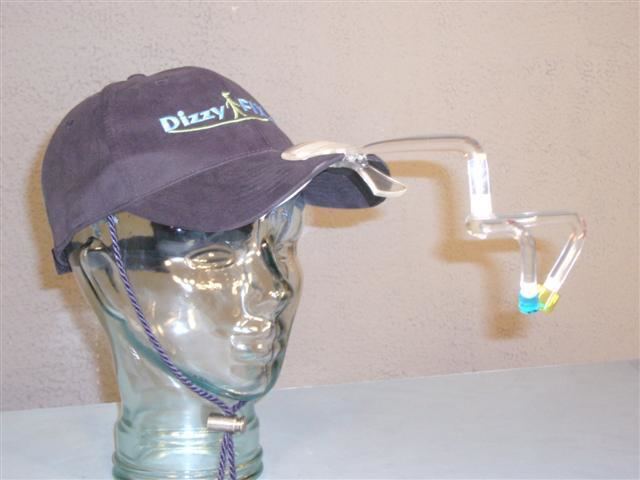 | ||
The DizzyFIX is an FDA cleared home medical device available to assist in the treatment of Benign paroxysmal positional vertigo (BPPV) and its associated vertigo. The device itself is a head-worn representation of semi-circular canals. The device is filled with fluid and a particle representing the otoconia (loose hard particles) associated with BPPV. The device works like a visual set of instructions and guides the user through the treatment maneuver for BPPV. This maneuver is called the particle repositioning maneuver or Epley maneuver.
Contents
BPPV
BPPV is the most common cause of peripheral vertigo. It can be characterized by three main symptoms: positional onset, spinning dizziness and short lived symptoms. The primary diagnostic maneuver is the Dix-Hallpike which elicits the cardinal sign associated with BPPV, rotatory nystagmus.
Background
The DizzyFIX was originally developed by otolaryngologists (ENT physicians) to assist in the long term treatment of patients with a known history of recurrent BPPV. BPPV is frequently highly recurrent with rates as high as 50%. Radtke et al. have suggested that home treatment is both safe and effective when training is adequate but that the key cause of failure of the home treatment is an imperfect repositioning maneuver. As a result of failed home treatments the DizzyFIX was developed to assist patients in the performance of a correct particle repositioning maneuver. Research to date indicates that use of the device is correlated with a correct particle repositioning maneuver.
Research
Bromwich et al. measured the impact that DizzyFIX had on volunteers' ability to perform the Epley maneuver. Reports indicated that the DizzyFIX improves accuracy by comparison to instructions and expert training alone.
Research dealing with the design and clinical application of the device was published in the July 2010 edition of Archives of Otolaryngology. The researchers gave the DizzyFIX to 40 patients suffering from BPPV. After one week of home treatment, 35 patients (88 percent) had no evidence of nystagmus with Dix-Hallpike maneuvers, a rate "comparable to standard treatment."
